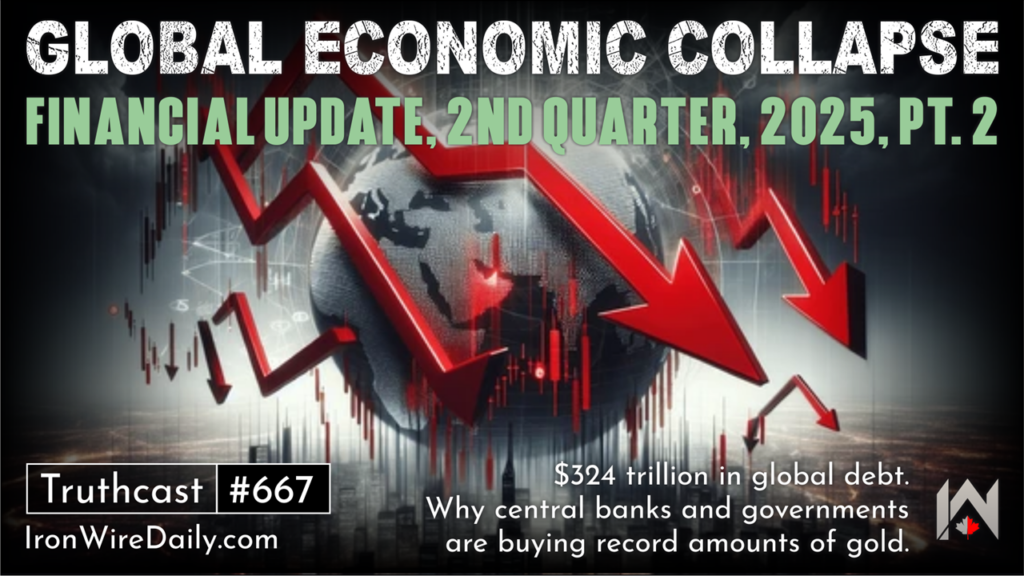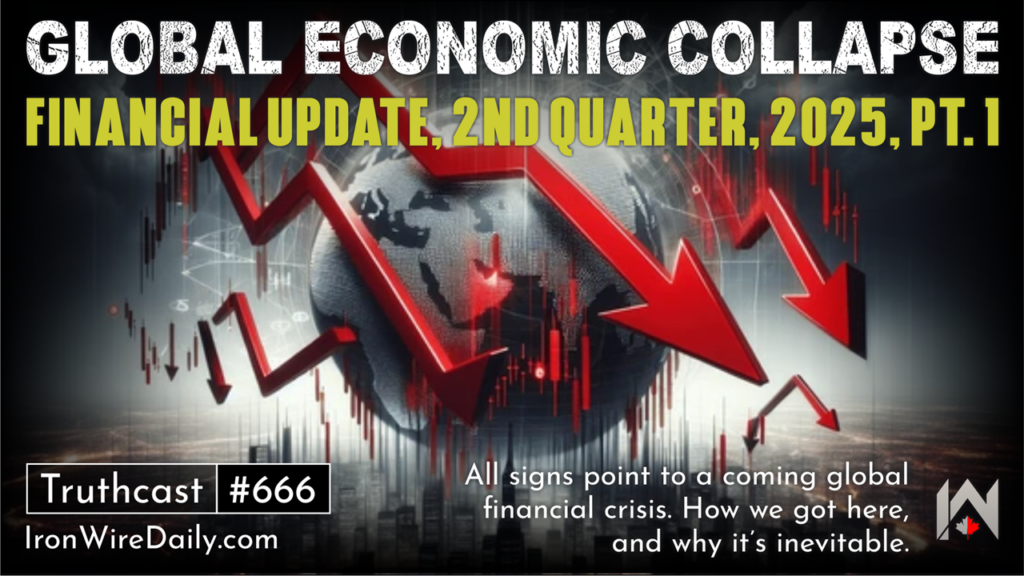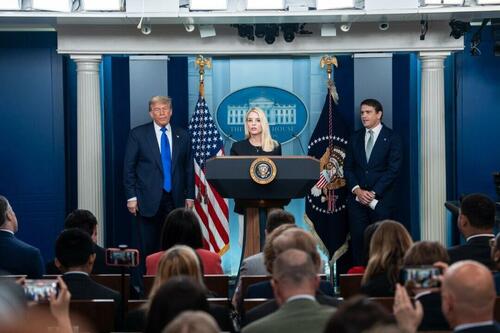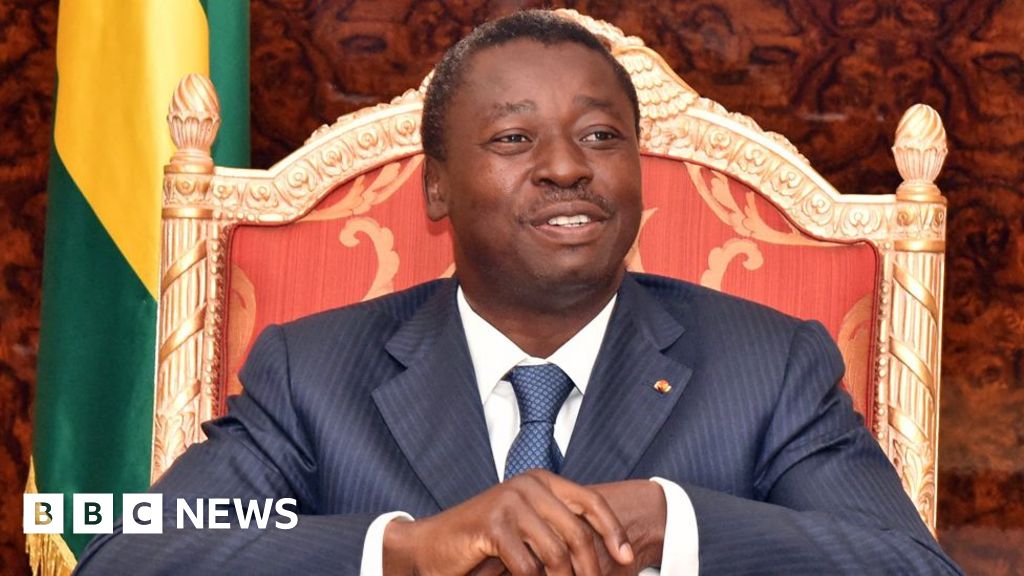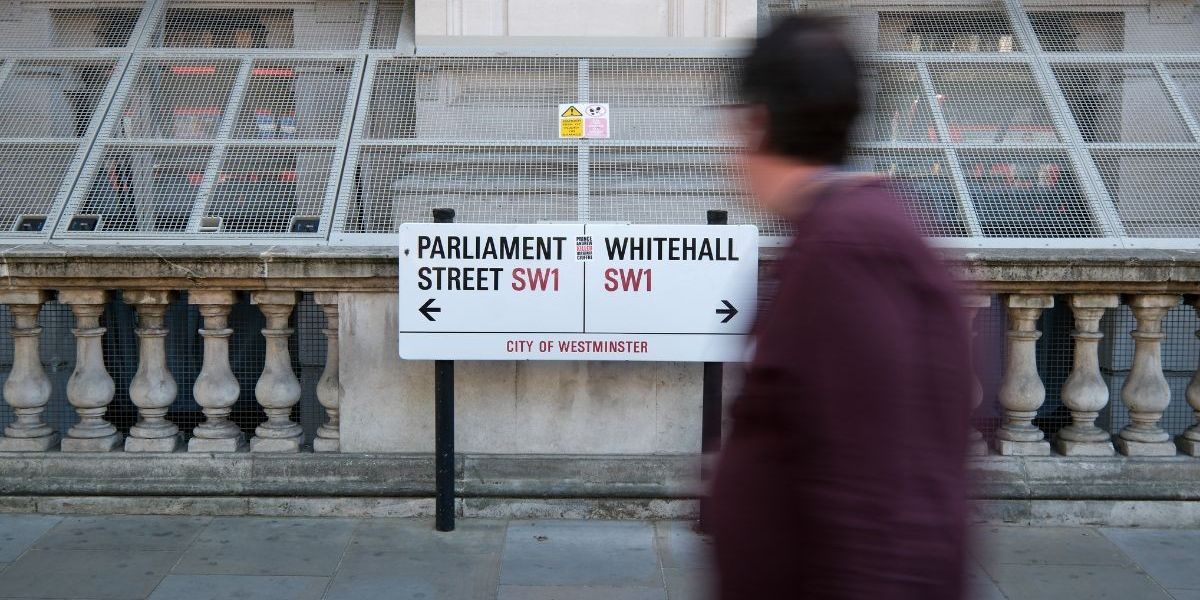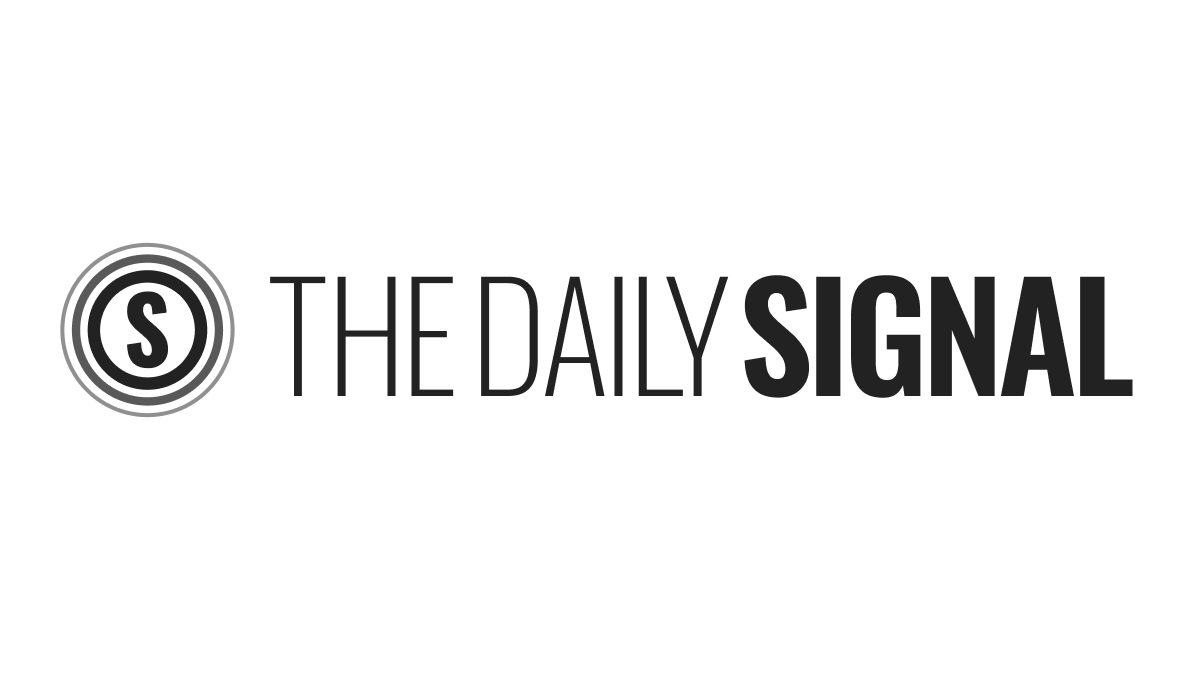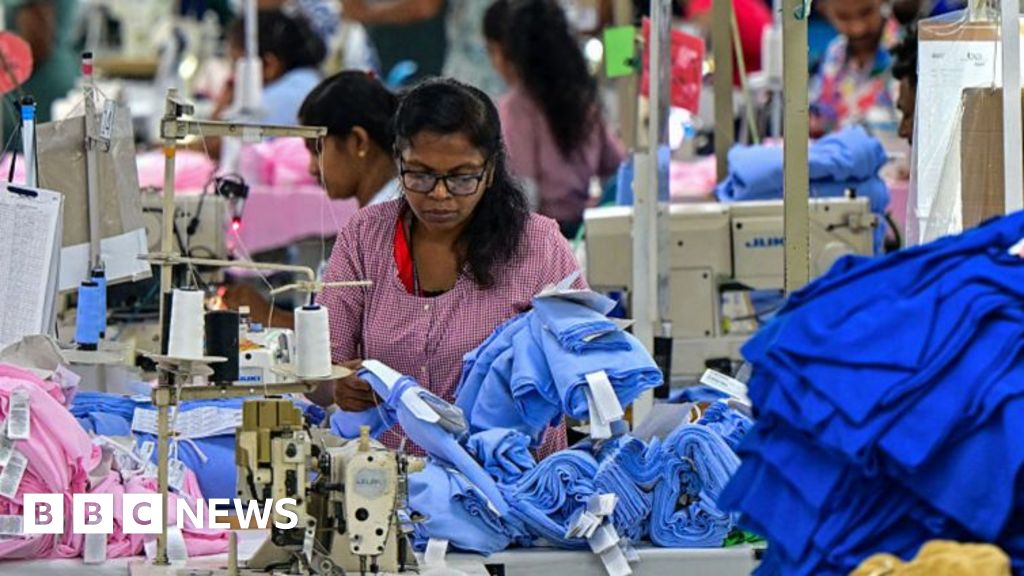Global Stocks, US Futures Trade In Record Territory After US-Japan Trade Deal

US equity futures are higher again and trading in record territory following the US, Japan trade deal, which was largely unexpected (Polymarket odds of a deal before August 1 were just 20%), triggering a global risk-on rally. Japan will pay a 15% tariff (down from 25%) with the auto sector tariffs reduced to 15% (also from 25%). This may reduce pressure on the Aug 1 deadline. US / China mtg next week to work on a trade deal with either a deal or an extension most likely. In any case, the news was good enough to push the S&P up 0.3% to a new record high of 6374 although US futures are lagging global counterparts as Value leads; the Nasdaq trades 0.2% higher, also in record territory. Europe’s Stoxx 600 jumped 1.2%, led by automakers on hopes the EU can secure its own agreement. Japan’s Topix soared as much as 3.6%, with Toyota posting its biggest daily gain since 1987. Pre-market, Mag7 names are all higher ahead of GOOG/TSLA earnings after the close. Cyclicals are unsurprisingly higher. Also, Meme stocks are ripping pre-mkt, adding 15% – 45% depending on the name. Bond yields are rising across the globe as growth expectations reset higher; JGBs are . USD is flat and commodities are mixed with Energy/Ags weaker and Metals rallying. Today’s macro data focus is on housing
In premarket trading, Mag7 are all higher (Nvidia +0.9%, Meta +0.3%, Microsoft +0.2%, Apple +0.1%, Alphabet +0.05%, Tesla +0.1%, Amazon +0.5%).
- Automotive and industrial chipmakers trade lower after an outlook and comments from industry bellwether Texas Instruments tempered investor optimism about a cyclical recovery. Texas Instruments (TXN) -10%, ON Semiconductor (ON) -6%.
- Power producers rally as data indicates that businesses and households served by the largest US power grid will spend a record $16.1 billion to ensure electricity supplies. Vistra (VST) +5%, Constellation Energy (CEG) +4%.
- Meme stocks including GoPro (GPRO) and Krispy Kreme (DNUT) are higher as retail traders look to buy into heavily-shorted companies with low share prices. GoPro +49%, Krispy Kreme +33%.
- AT&T (T) falls 3% after posting second quarter results.
- Capital One (COF) gains 2% after the credit-card company reported adjusted earnings per share for the second quarter that beat the average analyst estimate as the firm completed its long-awaited acquisition of Discover Financial Services.
- Enphase Energy (ENPH) falls 7% after the solar-equipment company forecast revenue for the third quarter that missed the average analyst estimate. It also sees the US residential market shrinking 20% next year as tax credits for homeowners end under President Donald Trump’s sweeping economic legislation.
- Fiserv (FI) slips 8% after the payments technology firm narrowed its adjusted earnings per share forecast for the full year.
- GE Vernova (GEV) climbs 4% after the energy spinoff from GE said it expects revenue to trend towards the higher end of $36 billion to $37 billion.
- Liberty Energy Inc. (LBRT) climbs 4% and Oklo Inc. (OKLO) rises 3% after the pair announced a power deployment partnership.
- Texas Instruments Inc. (TXN) tumbles 10% after stoking fears that a tariff-fueled surge in demand will be short-lived.
- Unity Software (U) falls 2% after BTIG gave the company a rare sell rating, downgrading from neutral following a strong run for the shares.
After months of uncertainty, Trump’s latest tariff deals have given some clarity on the new trade landscape. The agreement with Japan sets tariffs on the nation’s imports at 15%, including for autos — by far the biggest component of the trade deficit between the countries. Japan’s Topix Index closed up 3.2%, while Toyota Motor Corp. shares climbed the most since 1987.
Market sentiment was boosted overnight on hopes that the European Union will ink its own accord with the US. treasuries were poised to end a five-day winning run as demand for havens waned. The trade optimism contrasted with a batch of disappointing results from companies including Texas Instruments Inc., Nokia Oyj and SAP SE. The big tech names — Tesla Inc. and Alphabet Inc. — come after the close.
“The positive is that hopefully we’re coming to the end of all the tariff cloudiness in terms of what the ultimate rates will be so businesses can plan around them,” said Peter Boockvar at the Boock Report.
JPMorgan quantitative strategists warned of “a growing air of complacency” as the stocks rally coincides with an acceleration in earnings downgrades. “Either sell-side analysts are about to start a new round of upward revisions or the market is at risk of suffering a period of increased volatility and draw-downs,” the JPMorgan team led by Khuram Chaudhry said. “Something has to give!”
Turning back to earnings, where we see the first mega tech names report later today with GOOGL and TSLA, the “Magnificent Seven” are expected to post a combined 14% rise in second-quarter profits, while earnings for the rest of the US equity benchmark are predicted to be relatively flat, according to Bloomberg Intelligence data. Analysts will be studying the latest quarterly earnings from big tech for signs of resilience in a sector that has driven the rebound in US equities. Nasdaq 100 futures pointed to small gains at the open.
In Europe, the Stoxx 600 jumped 1.2%, led by automakers on hopes the EU can secure its own agreement. The tariff-sensitive auto sector outperforms, while utilities are the biggest laggards. In individual stocks, SAP falls as the software firm said that sales cycles are getting longer due to uncertainties around tariffs. Here are the most notable European movers:
- UniCredit shares advanced as much as 3.5% after the Italian lender reported upgraded its guidance for the year and dropped its takeover offer Banco BPM.
- Europe’s auto stocks gain after the US reached a trade deal with Japan, fueling a relief rally in one of the region’s worst-performing sectors of 2025.
- Lonza shares rise as much as 7.1%, the most in more than three months, after the company reported sales and core Ebitda for the first half that beat the average analyst estimate.
- EFG International shares gain as much as 5.2%, as the Swiss bank’s first-half results showed an improving cost/income ratio and strong growth in net new assets, according to Vontobel.
- Alstom shares rise as much as 2.7% after the French maker of trains reported sales and revenue and confirmed its FY26 outlook. Analysts saw no major surprises.
- Temenos shares jump 21%, the most in over a year, after it delivered a beat in the second quarter, with the Swiss maker of software for banks and financial services also boosting its guidance for the full year.
- Thales shares rise as much as 4.6% before paring gains after the company raised its annual organic sales growth outlook for the full year.
- SAP shares decline as much as 4.4% after the software maker said on a post-earnings conference call that sales cycles in areas like the US public sector and industrial manufacturing are getting longer due to trade uncertainties.
- ASM International shares fall as much as 9.2% after reporting quarterly bookings well below estimates, citing timing shifts in customer orders.
- Nokia drops as much as 7.7%, to the lowest since Sept. 2024, after the Finnish communication company lowers its full-year guidance, citing impact from FX and tariffs.
- Dassault Aviation shares drop as much as 7%, after its first-half sales and profit missed expectations, with the French airplane maker’s private jet unit affected by supply chain issues and the threat of tariffs.
- Breedon Group shares drop as much as 6%, plunging to their lowest level since May 2024, after the building materials supplier warned full-year results will be at the low-end of expectations this year.
Earlier in the session, a key gauge of Asian stocks rose by the most in a month, as a trade deal between the US and Japan raised optimism for more agreements ahead of Donald Trump’s Aug. 1 tariff deadline. The MSCI AC Asia Pacific Index climbed as much as 2%, reaching a four-year high, with Toyota and Tencent the biggest boosts. Japan led gains in the region, with the Topix gauge closing within a whisker of a record high, with Toyota posting its biggest daily gain since 1987. Stocks also climbed in Taiwan and Hong Kong, where a gauge of Chinese shares closed at its highest level since late 2021. Philippine equities rallied after an agreement was reached with the US that includes a slightly lower tariff of 19%. Thailand’s benchmark jumped as much as 2.6% after the nation’s finance minister said it’s close to a deal to lower a threatened 36% levy. The Hang Seng China Enterprises Index jumped 1.8% on Wednesday, topping a previous year-to-date high hit on March 18, after US Treasury Secretary Scott Bessent said he will meet counterparts from Beijing next week for a third round of talks aimed at extending a tariff truce. Here are the most notable movers:
- DigiPlus Interactive shares jumped 23%, the most since August 2016, as investors were seen positioning for potential inclusion in the benchmark Philippine equity index in the next review.
- Auto stocks surged after a report that the US government will set 15% tariffs on car imports from the country. Toyota Motor Corp. shares jumped 14.3%, while Nissan Motor Co. gained 8.3%.
- Kuaishou Technology’s Hong Kong-listed shares surge as much as 8.4% to the highest level since January 2023, following its announcement that it will exclusively broadcast MrBeast’s China internet debut.
- WuXi Biologics shares rise after the company said five manufacturing facilities passed the pre-license inspection by the US FDA. Chow Tai Fook shares advance after Citi raised its price target for the gold retailer after its 1Q revenue report.
- Lodha Developers shares fell as much as 6.6%, the most since April 7, after about 9.95 million shares change hands on NSE, according to data compiled by Bloomberg.
- WuXi XDC Cayman shares rise as much as 12% in Hong Kong after the Chinese biomedical company said it expects first-half profit to jump over 50% on-year.
- WuXi Biologics shares rise as much as 5% in Hong Kong after the company said five manufacturing facilities passed the pre-license inspection by the US FDA.
- DFI Retail Group shares jump as much as 13% in Singapore, to the highest since November 2021, after the company lifted its full-year profit guidance on expectation of stronger profitability through enhanced operational efficiency and disciplined cost management.
- Minth Group shares gain as much as 7% in Hong Kong, the most since May, after the automobile-parts maker said it has reached an agreement to develop its low-altitude aircraft related business.
- Chow Tai Fook shares advance as much as 2.1% in Hong Kong after Citi raises its price target for the gold retailer, citing better visibility on a same-store sales growth recovery after its 1Q revenue report.
In FX, the yen fluctuated after Japan’s Prime Minister Shigeru Ishiba said there was no truth in media reports that he will resign. The Bloomberg dollar spot index was flat. EUR and DKK were the weakest performers in the G-10 sphere, with NZD and AUD outperforming.
In rates, an auction of 40-year government notes in Japan saw the weakest demand ratio since 2011. The sale was a test of appetite for super-long debt following a historic election defeat for Ishiba when his ruling coalition failed to win a majority in the upper house at a vote on Sunday. The country’s 10-year government bond yield rose to the highest since 2008. The selloff spread to global bonds, with Treasuries, gilts and bunds falling across the curve, the most at the long end. UK 30-year bonds lagged peers, with the yield rising 6bps to 5.46%.
In commodities, Brent traded within Tuesday’s range at $68.40. Spot gold was little changed at $3,432/oz.
Looking at the US economic data calendar, we only have June existing home sales (10am). Fed officials are in external communications blackout ahead of their July 30 rate decision
Market Snapshot
- S&P 500 mini +0.3%
- Nasdaq 100 mini +0.2%
- Russell 2000 mini +1.1%
- Stoxx Europe 600 +1.2%
- DAX +0.8%
- CAC 40 +1.4%
- 10-year Treasury yield +3 basis points at 4.38%
- VIX -0.3 points at 16.18
- Bloomberg Dollar Index little changed at 1195.56
- euro -0.2% at $1.1734
- WTI crude -0.3% at $65.12/barrel
Top Overnight News
- The US and Japan have reached a trade agreement, with Trump confirming he would set his so-called reciprocal tariffs at 15% for the country, down from the 25% threatened in his recent letter. Under the deal Japan will invest $550bn in the US, and critically the deal will set tariffs on autos to 15% from their current 25%. WSJ
- Trump has now set his sights on trade negotiations wit the EU after announcing his framework agreement with Japan. He confirmed the two sides will hold a round of negotiations today. CNBC
- Japanese PM Shigeru Ishiba denied on Wednesday he had decided to quit after a source and media reports said he planned to announce his resignation to take responsibility for a bruising upper house election defeat. RTRS
- Japanese yields spike as investors feel the US trade deal eliminates uncertainty and permits the BOJ to resume policy tightening while demand at a 40-year auction was tepid and speculation grows that PM Ishiba could step down (potentially giving way to a more fiscally profligate government). FT
- BOJ Deputy Governor Shinichi Uchida indicated that the US trade deal will nudge the central bank closer to a rate hike. BBG
- China’s coal purchases plunged 26% in June from a year earlier, to 33 million tons, the least since February 2023. The decline was led by a 30% drop from top supplier Indonesia. BBG
- GOOGL eps in focus today – still broadly underweight even as positioning gotten fuller over last 1.5 weeks with stock now up 10 sessions in a row (and +9% over that stretch). Expectations are for a beat vs street in Cloud and Search — with top debates expected around cloud accel, clicks growth, and YouTube kpis. DoJ decision looming in next month and could see positive upside on earnings capped as a result. GS TMT Trading
- The US Nuclear Security Administration was among the institutions breached by the cyberattack on Microsoft, which the company linked to China, a person familiar said. No sensitive or classified information is known to have been compromised. BBG
- TXN -11% pre mkt on weaker than expected 3Q revs and concerns that tariff-fueled surge in demand won’t last. BBG
Trade/Tariffs
- US President Trump announced that they completed a massive deal with Japan, which he said is perhaps the largest deal ever made with Japan to invest USD 550bln into the US and will open their country to trade including cars and trucks, rice and certain other agricultural products, and other things. Trump added that Japan will pay reciprocal tariffs to the US of 15% and is forming a JV with the US in Alaska and they are going to make a deal on LNG.
- Japan’s top trade negotiator Akazawa said they were able to reach an agreement that is beneficial to both countries and struck a deal with the US after a 70-minute meeting with President Trump, while he added that steel and aluminium are not included in the tariff deal.
- Japanese PM Ishiba confirmed they agreed with the US to lower tariffs with auto tariffs lowered to 15% and will continue working closely with the US. Ishiba said the deal does not include lowering tariffs on Japan’s agricultural products, while Japan will raise the portion of rice imports from the US within the minimum access framework.
- BoJ Deputy Governor Uchida says US-Japan trade agreement is a big progress and will reduce uncertainty over Japan’s economic outlook; will reflect trade agreement in economic outlook report; uncertainty remains on tariff impact. There is always upside and downside risks to the outlook. Japan trade deal roughly falls in line with assumptions BoJ made in projections at prior quarterly report on May 1st; at present, must support the economy through accommodative monetary policy.
- US President Trump said Europe is coming to Washington for trade talks on Wednesday.
- US President Trump said we are going to get drug prices down and drug companies will have a lot of problems if they don’t agree, while he added that they will use import restrictions to force foreign suppliers to cut drug prices.
- China’s Commerce Minister held a video call with the EU’s trade chief and had candid and in-depth discussions, while they discussed China and EU trade cooperation and issues, as well as EU sanctions on Chinese firms and China lodged solemn representations over sanctions.
- US President Trump will meet UK PM Starmer during his weekend trip and they will seek to formalise a trade deal.
- Brazilian Finance Ministry official Durigan said they have been working on a plan to protect themselves from potential 50% taxation by the US, and the work has not been completed, while they have tried to do everything possible to reverse the 50% tariff by the US and have been looking at the possible need to help Brazilian companies due to US tariffs which will be done with the least possible fiscal impact.
- Chinese Commerce Ministry confirms Chinese Vice Premier He Lifeng is to hold talks with the US; VP is to visit Sweden between July 27-30th.
- Germany and France are to push the EU prepare trade retaliation against the US, unless it makes compromises. (FT)
A more detailed look at global markets courtesy of Newsquawk
APAC stocks were mostly higher as focus centred on the latest trade developments after US President Trump announced three trade deals in one day with the Philippines, Indonesia and Japan, with the latter involving a USD 550bln investment in the US and 15% tariffs for Japanese goods. ASX 200 gained with the advances led by strength in materials, miners, energy and resources, while defensives are at the other end of the spectrum. Nikkei 225 surged above 41,000 following the announcement of a US-Japan trade deal involving a 15% tariff on Japanese goods including autos and auto parts which is less than the previous threat of 25% tariffs and in turn, boosted automakers which dominated the list of biggest gainers with several up by double-digit percentages, while there were also tailwinds as the JPY slightly softened in the aftermath of a report that PM Ishiba is to announce his resignation by the end of August. Hang Seng and Shanghai Comp conformed to the mostly positive risk tone with US President Trump noting that there will probably be a meeting with Chinese President Xi in the not-too-distant future, while US Treasury Secretary Bessent said they will likely work out an extension regarding the August 12th deadline with China and he will attend talks next Monday and Tuesday with China in Stockholm.
Top Asian News
- Japanese PM Ishiba is to resign with the PM to announce his resignation by the end of August, according to Mainichi newspaper. It was separately reported that Japanese PM Ishiba is likely to announce resignation as early as this month, according to Yomiuri.
- Japanese PM Ishiba says he met with former PM Kishida overnight, shared a strong sense of crisis, resignation was not discussed with them.
- Japanese PM Ishiba says absolutely no truth to reports about his resignation.
- BoJ Deputy Governor Uchida said Japan’s economy has recovered moderately although some weakness has been seen in part and noted that Japan’s economic growth is likely to moderate due to the effects of trade and other policies. Uchida said uncertainty surrounding trade policies remains extremely high and it is important to maintain loose monetary policy to support the economy. Furthermore, he said interest rates are expected to be raised in accordance with economic and price improvements if the scenario is realised and he will judge whether the economy and prices move in line with the forecast without any pre-set idea.
- Thereafter, BoJ Deputy Governor Uchida says at present, BoJ must support the economy through accommodative monetary policy. US-Japan trade deal roughly falls in line with assumptions BoJ made in projections at prior quarterly report on May 1.
European bourses (STOXX 600 +1.2%) opened firmer across the board, and continued to trade higher throughout the morning – currently at session highs. European sectors hold a very strong positive bias, with only a couple of sectors residing in negative territory. Autos tops the pile and is currently the clear outperformer, largely benefiting from trade optimism after Japan finally struck a deal with US – optimism which stems from traders factoring in the potential benefits European automakers now have on pricing over Japanese autos. Consumer Products also benefit from the broader risk tone.
Top European News
- European Commission President von der Leyen says EU/Japan “Competitiveness Alliance” will: Increase trade, strengthen economic security with robust rare earth supply chains and accelerate innovation.
FX
- DXY is flat with the USD showing a mixed performance vs. peers (softer vs. antipodes, firmer vs. havens). Incremental macro drivers for the US remain on the light side with price action for the USD in recent sessions led by the retreat in US yields. Over the past 24 hours, the US has struck trade deals with Japan (see JPY section for details), Indonesia and the Philippines. These agreements have reduced fears surrounding the August 1st deadline. Albeit, deals with its two largest trading partners, the EU and China, are yet to be reached. DXY sits towards the bottom end of yesterday’s 97.30-99 range.
- EUR is a touch weaker vs. the USD with macro drivers lacking. Trade headlines regarding the EU and US remain on the light side following weekend reports that the EU is looking at a wider set of potential countermeasures against the US if a deal is not reached by August 1st. EUR/USD trades towards the top end of yesterday’s 1.1679-1.1760 range.
- JPY is a touch softer vs. the USD alongside an encouraging risk tone, which has been buoyed by news of the US-Japan trade agreement. The deal will see Japanese goods subject to a 15% tariff (including autos, which had been threatened by a 25% rate). Additionally, Japan will invest USD 550bln into the US and is expected to sign an LNG deal with the US. The deal has notably bolstered Japanese equities with Auto names leading the charge. However, the FX reaction is more muted. One driver behind this is the ongoing fallout from Sunday’s Upper House election. Reports in Japanese press suggest that PM Ishiba is set to announce his resignation – something, which he has since refuted. USD/JPY sits towards the middle of its current 146.21-147.21 range.
- GBP is marginally firmer vs. the USD with UK-specific newsflow on the light side. Cable is trading higher for its third session in a row, however, this appears to be more of a USD story, than a GBP one. That could change tomorrow with flash PMI metrics for July due on deck. Expectations for marginal upticks in the services and manufacturing components. Elsewhere, retail sales data is due on Friday. Cable has extended its run on a 1.35 handle and breached its 50DMA at 1.3523. Next upside target comes via the 11th July high at 1.3585.
- Antipodeans are both sit at the top of the G10 leaderboard following the upbeat risk sentiment seen in the wake of the US-Japan trade deal. Newsflow out of Australia and New Zealand remains light. AUD/USD has gained a firmer footing on a 0.65 handle with a current session high at 0.6581.
- PBoC set USD/CNY mid-point at 7.1414 vs exp. 7.1596 (Prev. 7.1460)
Fixed Income
- An eventful session for Japan. Firstly, US President Trump announced that a trade deal has been agreed and will result in a 15% tariff level (full details on the feed). An update that supported the JPY and weighed on JGBs with yields picking up across the Japanese curve with the short-end leading and the 10yr making a marginal new post-2008 peak at 1.601%; surpassing 1.60% from the week before the Upper House election. Amidst this, reports emerged from various outlets that PM Ishiba was, despite his initial post-election commitment, planning to announce his resignation in either July or August and take personal responsibility for the Upper House result. The trade update weighed on JGBs from 138.50 to 138.00 at the resumption of trade before slipping further to a 137.56 low in the hours after as the reports around Ishiba circulated. Thereafter, a slight pickup from lows occurred – but this proved short-lived with session lows hitting after a weak 40yr auction.
- USTs are in the red, holding at a 111-04 low with downside just shy of 10 ticks at most. Newsflow has been focussed almost entirely on trade as Trump announced deals with Japan, Indonesia and the Philippines. Furthermore, China’s Commerce Ministry has confirmed talks with the US next week in Sweden. Pressure seen across the fixed income benchmarks, with JGBs leading as above, amid the positive risk tone and prospect for more trade updates today (see Bunds). The mentioned trough holds just before the 111-00 mark, if breached the 21st July base is next at 110-24 before 110-19 from July 18th and then a double-bottom at 110-08+.
- Bunds are under pressure, to a slightly larger extent than USTs. Downside that is perhaps ahead of EUR 5bln 2035 Bund tap into Thursday’s ECB (no move expected, focus on commentary/guidance) and the language from Trump overnight. China’s Commerce Minister held a video call with the EU’s trade chief and had candid and in-depth discussions, while they discussed China and EU trade cooperation and issues, as well as EU sanctions on Chinese firms and China lodged solemn representations over sanctions. Altogether, Bunds down to a 130.33 low with downside of c. 50 ticks at most but yet to test Tuesday’s 130.24 base or by extension the WTD low at 129.73 from Monday.
- Gilts echo the above with downside of around 50 ticks at most. Specifics for the UK have been light with the benchmark largely just following the risk tone. While in the red, Gilts remains above Tuesday’s 91.46 base and by extension the 91.29 WTD trough from Monday. Bearish action ahead of a GBP 3bln 2040 Gilt auction due. Results of this were strong, with a b/c of 3.69x and a more typical tail, sparking upside in Gilts of around 10 ticks from the 91.58 low.
- UK sells GBP 3bln 4.375% 2040 Gilt: b/c 3.69x (prev. 2.88x), tail 0.1bps (prev. 1.0bps), average yield 5.066% (prev. 4.850%).
- Germany sells EUR 3.832bln vs exp. EUR 5bln 2.60% 2035 Bund: b/c 1.5x (prev. 1.6x), average yield 2.62% (prev. 2.63%), retention 23.36% (prev. 24.05%)
Commodities
- Choppy price action in contained ranges for the crude complex, ultimately holding a mild negative bias whilst newsflow remains rather light. This follows the Tuesday weakness seen in prices as tariff woes linger ahead of the August 1st deadline. Sticking with trade, the EU and US are yet to move forward on a deal, whilst the Chinese Commerce Ministry confirmed that Chinese Vice Premier is to hold talks with the US next week.
- Mixed/flat trade across precious metals amid a lack of fresh catalysts during the European session as traders await potential further trade updates in the run-up to next Friday’s US-set deadline.
- Mixed trade across base metals with the risk tone also somewhat tentative, awaiting the next catalysts. 3M LME copper trades in a narrow USD 9,870.05-9,932.80/t range at the time of writing.
- US Private Inventory Data (bbls): Crude -0.6mln (exp. -1.6mln), Distillates +3.5mln (exp. -1.1mln), Gasoline -1.2mln (exp. -0.9mln), Cushing +0.3mln.
- Brazilian miner Vale reported Q2 iron ore output at 83.6mln tons (prev. 67.7mln tons Q/Q), iron sales 77.3mln tons (prev. 66.1mln tons Q/Q).
- Contamination issue with Azeri BTC oil has reportedly been resolved; Loadings continue from the Turkish port of Ceyhan, according to Reuters sources.
- Azeri central bank sees 2025 average oil price as USD 68.60/bbl and USD 299/100 cubic metres.
Geopolitics
- Israel’s Defence Minister said there is a possibility of a renewed campaign against Iran.
- US Special Envoy Witkoff will travel to Europe this week for meetings on issues including Gaza and will continue pushing for a Gaza ceasefire.
- US is to mediate the Israel-Syria meeting on Thursday to avoid new crises, according to Axios.
- US President Trump’s administration has informed Hamas and Israel that it would like to see an end to the conflict, via Al Arabiya.
- On Israel-Lebanon, US envoy Barrack says “There are problems preventing the full implementation of the ceasefire agreement”, according to Sky News Arabia.
- “Al-Arabiya sources: Hezbollah’s military wing informs [Lebanon’s Speaker of the Parliament] Berri that it will not surrender weapons”, via Al Arabiya.
- US Energy Secretary Wright told Fox News that sanctioning Russian oil is a very real possibility.
US Event Calendar
- 7:00 am: Jul 18 MBA Mortgage Applications, prior -10%
- 10:00 am: Jun Existing Home Sales, est. 4m, prior 4.03m
- 10:00 am: Jun Existing Home Sales MoM, est. -0.74%, prior 0.8%
DB’s Jim Reid concludes the overnight wrap
As we go to press this morning, we’ve had some huge headlines out of Japan. First, they reached a trade deal with the US ahead of the August 1 tariff deadline, which has led to a surge in Japanese equities, with the Nikkei up +3.25%. Second, it’s been reported by the Yomiuri newspaper that Prime Minister Ishiba has decided to step down and might announce his resignation as soon as this month, which follows the upper house election at the weekend. And third, weak demand at a 40yr bond auction has seen a fresh move higher for Japanese government bond yields, with the 10yr yield up +7.3ps to 1.58%, which would almost be its highest closing level since 2008.
For global markets, the trade deal news has been the most significant, as it’s raised hopes that the US might be about to reach deals with other countries that avoid the higher tariffs on August 1. That deal with Japan includes a 15% tariff, beneath the 25% tariff that Trump threatened in his recent letter, and Bloomberg have also reported that Japan’s automobiles and parts would face the 15% tariff, and not the higher sectoral tariff for automobiles. In a post, Trump also said that “Japan will invest, at my direction, $550 Billion Dollars into the United States, which will receive 90% of the Profits.” However, the details of how that will work are not immediately clear.
The news of the deal has led to a big jump for Japanese equities, with the Nikkei (+3.25%) on course for its best daily performance since the 90-day tariff extension was announced in early April. And notably, it’s been auto companies that have led the way, with Toyota’s share price up +14.18% this morning as investors reacted to the news on the auto tariffs. Moreover, that optimism has carried over into other Asian markets outside Japan, with advances for the Hang Seng (+1.13%), the CSI 300 (+0.74%), the Shanghai Comp (+0.75%) and the KOSPI (+0.18%). And over in the United States, futures on the S&P 500 are up +0.19%, building on their record high in yesterday’s session.
Notably, one of the other strong performers this morning are European equity futures, with those on the German DAX up +0.93%. That’s because the Japan deal has significantly raised hopes that the EU might also be able to reach a trade deal, as they’ve been threatened with 30% tariffs on August 1. Indeed, Trump also announced a deal with the Philippines yesterday that would see them face a 19% tariff. And there were some positive remarks on trade from US Treasury Secretary Bessent as well yesterday, stating that he would meet his Chinese counterparts in Stockholm for further talks. As a reminder, the US and China agreed to dial back their tariffs for 90 days in May, with the US rate coming down from 145% to 30%, so that’s about to run out in mid-August. But Bessent struck a positive note, saying that “we’ll be working out what is likely an extension then.”
Collectively, this more positive trade news has really helped to ease investor fears that tariffs are about to snap back higher on August 1. But of course, the threat of much higher tariffs still remains for several large economies, including the 30% on the EU, 35% on Canada and 50% on Brazil. And there’s also the pledge of higher sectoral tariffs, including 50% on copper, so this is far from the end just yet, and those tariffs would each have a significant impact if they did come in. We also know from experience that we might not know the outcome until hours before the deadline, which happened in early February where the 25% tariffs on Canada and Mexico were postponed for 30-days on the day before they were due to be implemented.
Whilst Japanese equities have rallied overnight, it’s been a different story for the country’s bond markets, with the 10yr yield currently just shy of its highest closing level since 2008. That follows a 40yr bond auction, where the bonds yielded the highest on record at 3.375%, whilst the demand ratio was the weakest since 2011. So that’s seen the 10yr JGB yield rise +7.3bps to 1.58%, whilst the 40yr yield is up +9.0bps this morning to 3.45%. And that’s cascaded across global markets too, with the 10yr US Treasury yield also up +2.0bps overnight to 4.36%.
Those headlines overnight followed a comparatively quiet day for markets yesterday, where the S&P 500 (+0.06%) just about eked out another record high. Paradoxically given the overnight developments, there had been growing concerns about tariffs earlier in the session, with Bessent saying in an interview that “What I think will happen is that the tariff level will boomerang back to the reciprocal level on April 2nd.” So that had raised fears about a much higher tariff rate, before the news of the Japan deal saw that ease again. Indeed, the risk-off move yesterday saw gold prices (+1.01%) almost close at a record high, at $3,431/oz.
One factor ultimately supporting markets yesterday was the continued decline in Treasury yields, with the 10yr (-3.3bps) and the 30yr (-2.7bps) yields falling for a 5th consecutive day, down to 4.35% and 4.92% respectively. That came in part because of a belief that Fed Chair Powell’s position was relatively more secure, particularly after Bessent said there was “nothing that tells me that he should step down right now”. And while President Trump made some fresh criticisms of Powell, claiming that rates should be at 1%, there was no fresh urgency in his remarks, instead saying “he’s going to be out pretty soon anyway. In eight months, he’ll be out”. So from a market perspective, that continued to ease the fears from last week that Powell might be fired. That said, lower yields did continue to weigh on the dollar index, which fell -0.47% to mark its worst 3-day run (-1.36%) in two months.
Those tariff fears were evident earlier in the day, where European equities lost ground. The STOXX 600 was down -0.41%, and some of the more trade-exposed stocks did particularly badly, with the STOXX Automobiles and Parts Index down -1.26%. Those losses were echoed across most of Europe, with the CAC 40 (-0.69%) and the DAX (-1.09%) seeing decent falls. However, US stocks shrugged off those concerns, and the S&P 500 (+0.06%) pared back its earlier losses to ultimately close at a new high, whilst the equal-weighted index was up +1.29% as interest-rate sensitive sectors led the gains. By contrast, tech stocks lost ground before the start of the Mag-7 earnings today that sees Alphabet and Tesla reporting after the US close. The NASDAQ and Mag-7 fell by -0.39% and -0.48% respectively.
Meanwhile, European bonds experienced a further rally yesterday, with further gains after the very strong moves on Monday. That saw yields on 10yr bunds (-2.3bps), OATs (-3.0bps) and BTPs (-1.6bps) all move lower. And gilts (-3.3bps) saw a similar move, despite data showing that the UK government borrowed more than expected in June, at £20.7bn (vs. £17.5bn expected). The moves were also supported by lower inflation expectations in the near-term, particularly as Brent crude oil prices fell -0.90% to $68.59/bbl.
Elsewhere, there was very little data to speak of yesterday, although the Richmond Fed’s manufacturing index fell to an 11-month low of -20 (vs. -2 expected).
To the day ahead now, and data releases include US existing home sales for June, and the Euro Area’s preliminary consumer confidence reading for July. Otherwise, earnings releases include Alphabet and Tesla.
Loading…




